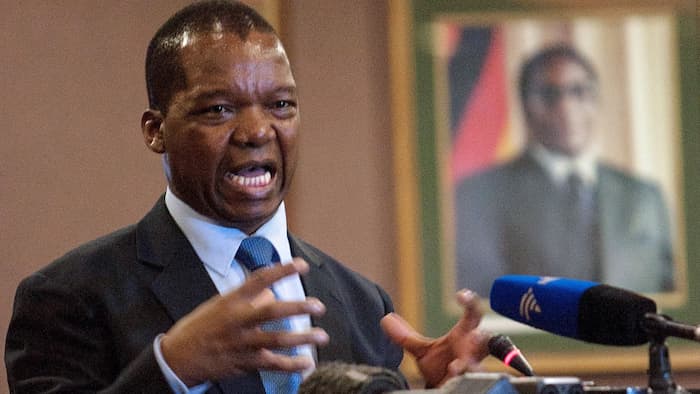By Phillimon Mhlanga and John Kachembere
Zimbabwe, which is grappling with a severe shortage of foreign currency, will release an additional $300 million in bond notes under another liquidity support facility secured from Cairo-headquartered lender, the African Export Import Bank (Afreximbank).

Reserve Bank of Zimbabwe (RBZ) governor, John Mangudya, disclosed this yesterday while presenting his mid-term Monetary Policy Statement.
The new facility will be in addition to the $200 million facility for bond notes secured from Afreximbank last year.
The bond notes will be released into the market on a “drip-feed basis” to contain inflation and reduce cash leakages, said Mangudya.
“Building on the success of the 2,5–5 percent export incentive scheme in securing and increasing the export of goods (by 14 percent) and services and diaspora remittance since May 2016, the bank found it imperative to extend and enhance the export incentive scheme by $300 million under a standby liquidity support from Afreximbank,” said Mangudya.
“The standby liquidity support shall be used to back the bond notes that are going to be issued to monetise this subsidy scheme. As like under the $200 million facility (secured last year), the bank will release the bond notes into the market on a drip-feed basis,” he said.
Zimbabwe introduced a multicurrency regime in 2009 after abandoning its own currency to escape hyperinflation.
But a serious shortage of foreign currency resulted in the country facing a severe liquidity crisis that caused President Robert Mugabe’s administration to introduce bond notes in November last year.
Bond notes worth $175 million and coins worth $25 million have been released into circulation, but have failed to meet the demand for physical cash in the economy.
A hugely cash economy until the banknote shortages deepened in the first quarter of 2016, at least 70 percent of Zimbabwe’s transactions now go through electronic payment platforms.
Central bank figures show that values and volumes of electronic payments have gone up by 23 percent and 131 percent, respectively, between June 2016 and the end of the first half of 2017.
Mid-term Monetary Policy Statement highlights
•Zimbabwe has secured funds to clear $1,7 billion World Bank, AfDB arrears
•97% of the total number of bank loans now on the central bank’s credit registry
•Foreign investment flows of $6,8 million in H1 2017, compared to $32,8 million in H1 2016
•Total cash imports were $140 million in the first half, with RBZ importing $100 million of that
•RBZ imported $100 million out of the total $140 million cash imports in H1
•Central bank extending the export incentive scheme by $300 million under a new standby liquidity support facility from Afreximbank.
•RBZ secured an enhanced nostro stabilisation facility of $600 million from Afreximbank to manage Zimbabwe’s foreign exchange receipts.
•Central bank has renewed its $200 million African Export-Import Bank Trade Backed Securities (Aftrades) facility with the Afreximbank to $400 million for another two years.
•Domestic credit recorded an annual increase of 21,1 percent, from $6,9 billion in May 2016 to $8,4 billion in May 2017.
•The stock of Treasury bills and bonds as at June 30, 2017 amounted to $2,5 billion with the bulk issued for expunging RBZ’s legacy debt.
•RBZ establishing a Zimbabwe Portfolio Investment Fund to facilitate the efficient repatriation of portfolio related funds to foreign investors on the Zimbabwe Stock Exchange (ZSE).
•An initial $5 million seed capital will be injected into the Zimbabwe Portfolio Investment Fund to improve investor confidence.
• Annual average inflation projected at between two and three percent
•Current account deficit down from $1,5 billion in 2015 to $552,8 million in 2016, projected at $651,3 million for the whole of 2017.
•A cumulative total of 2.5 million Real Time Gross Settlement (RTGS) transactions valued at $27,4 billion were settled through the RTGS system from January 3, 2017 to end of June, accounting for just above 70 percent of total transactions in the economy.
•Total foreign currency receipts for the country amounted to $2,96 billion during the period January to June 2017.
•$2,1 billion utilised for various foreign payments through banks with the balance of $887 million received and administered by the Reserve Bank through the Foreign Exchange Management System.
•Since inception of the export incentive, cumulative foreign currency receipts amounted to $4,9 billion, four percent higher than the same period prior year.
•As at June 30 2017, a total of $175 million had been paid out under the export incentive scheme in the form of bond notes against a payable amount of $187,7 million.
•Gold deliveries to Fidelity Printers and Refiners (FPR) – which hit 10 tonnes during the first half of 2017 – grew by 3,9 percent compared to the same period last year.
•RBZ also increasing the diaspora remittances incentive for remittances received through banking or wallet accounts from three to 10 percent, with effect from August 2017.
•The carrying of foreign currency cash on person per exit from Zimbabwe has been reviewed to an equivalent of $2 000 per individual per exit from $1 000.
•RBZ to manage Foreign exchange receipts from platinum and chrome. Financial Gazette






